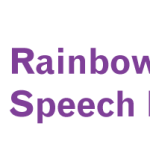HAS YOUR CHILD HAD THEIR TONSILS OR ADENOIDS REMOVED?
 You might be wondering, why do we ask this and what does it have to do with Speech Pathology?
You might be wondering, why do we ask this and what does it have to do with Speech Pathology?
First let’s take a dive into the anatomy of the upper respiratory tract è
As Speech Pathologists, we are tertiary trained professionals who work with individuals in the areas of communication and swallowing. It is therefore important that we consider factors impacting upon the whole individual, and this includes the role pathophysiology plays in our ability to speak and swallow.
First, let’s recap… what are adenoids and tonsils?
Tonsils: Are the two round pieces of tissue located at the back of the mouth on the left and right sides of the throat.
Adenoids: Are a patch of tissue behind the nose, high up in our throat. We can’t see these without a scope!
…And let’s introduce a piece of anatomy that you may not have heard of before:
Nasal Turbinates: These are small structures within the nose and are responsible for cleansing and humidifying air as it passes through our nostrils and into the lungs.
This is just some of the anatomy found within our upper airways and when healthy, pose no detriment to our ability to speak and swallow.
What are the signs and symptoms of enlarged tonsils, adenoids and turbinates? 
- Breathing through the mouth instead of the nose most of the time
- Speech sounding ‘blocked’
- Chronic runny nose
- Noisy breathing during the day
- Recurrent ear infections
- Snoring at night
- Restlessness during sleep
- Pauses in breathing throughout the night
- Dark circles under the eyes
- Drooling persisting past 2 years of age
- Poor resting tongue posture and associated open-bite
- Fussy eating and avoiding textures that may inflame tonsils upon swallowing
- Complaining of a chronic sore throat
When enlarged, this anatomy can contribute to upper airway obstruction.
How do enlarged tonsils, adenoids and turbinates impact upon communication and swallowing?
If this anatomy is enlarged or inflamed, it may impact upon communication in the following ways:
- Hyponasality, which may impact upon the production of nasal speech sounds such as /m/, /n/ and /ng/
- Chronic mouth breathing, which can contribute forcing the tongue to sit further forward in the mouth, potentially distorting accurate placement of the tongue for speech sounds and contributing to slowed phonological development
An obstructed upper airway can further impact upon mealtimes and may contribute to:
- A disrupted breath/swallow rhythm
- Inability to maintain lip seal
- In severe cases, contributing to a forward tongue thrust, impairing a child’s ability to readily manipulate food in preparation for a swallow. This also poses further implications for a child’s ability to develop the tongue lateralisation and mature chewing pattern that is required to explore a variety of food textures
It should be noted that the implications of obstructed airways and sleep quality suggests negative implications for a child’s attention and behaviour. Enlarged tonsils and adenoids are the most common cause of sleep apnoea in children.
My child presents with the above signs and symptoms. What next?
It is important to discuss concerns with your GP and seek referral on to see an Ears Nose and Throat (ENT) specialist for assessment. It is important to complete your research and seek an ENT of whom has completed further study in upper respiratory management. You might also find having a discussion with your Speech Pathologist, dentist or lactation consultant about an ENT they would recommend.
Compiled by Rachel Finney – Speech Pathologist (BSpPath, MSPA, CPSP)


